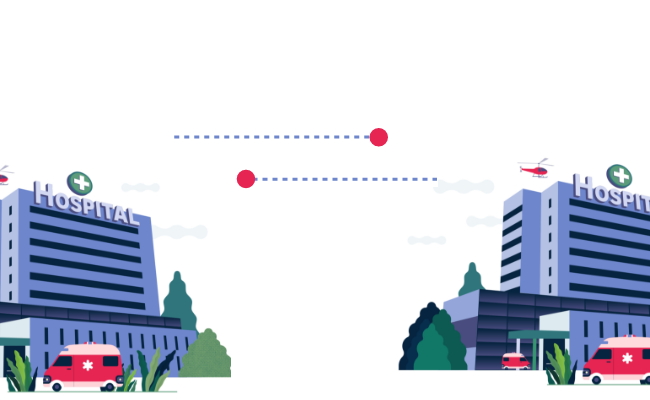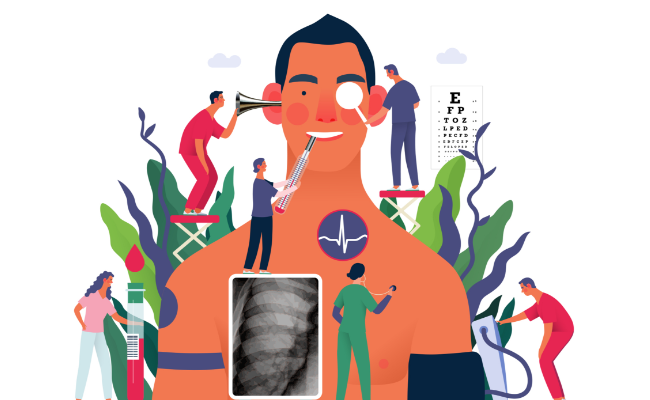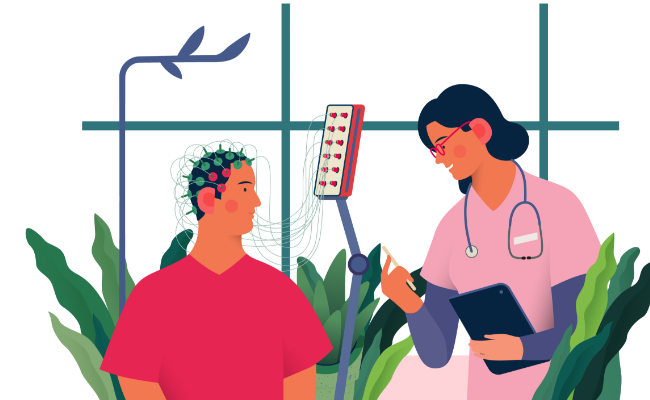The Medicare Annual Wellness Visit (AWV) is a key preventive service offered to Medicare beneficiaries. This free yearly visit provides seniors with personalized health risk assessments and helps establish a preventive care plan to manage chronic conditions and avoid future illnesses. Although the AWV is vital for improving patient outcomes and reducing healthcare costs, its administration can be time-consuming and complex for healthcare providers.
HealthViewX, a leading care orchestration platform, offers a robust solution to optimize and enhance the delivery of the Medicare AWV program. By leveraging HealthViewX’s innovative tools, providers can streamline AWV workflows, improve patient engagement, and increase revenue through better compliance and preventive care management. In this blog, we will explore how HealthViewX supports and transforms the AWV process for healthcare organizations.
1. Streamlined Workflow and AWV Administration
Administering the Medicare Annual Wellness Visit requires detailed documentation and coordination between healthcare providers, clinical staff, and patients. Many practices struggle to manage the paperwork, follow-up tasks, and time-consuming administrative duties associated with AWVs.
How HealthViewX Helps:
- Automated Patient Identification: HealthViewX’s platform identifies eligible Medicare patients for the AWV based on their last wellness visit and proactively schedules upcoming appointments. This automation ensures that no patients are overlooked, which can help boost compliance rates and patient outcomes.
- Pre-Visit Data Collection: HealthViewX enables patients to complete a pre-visit health risk assessment questionnaire from the comfort of their homes. The platform’s user-friendly interface allows patients to enter their medical history, lifestyle data, and other critical information before their appointment, saving time during the in-person visit.
- Customizable Workflows: HealthViewX offers providers the ability to customize AWV workflows based on practice needs, from appointment scheduling to post-visit follow-ups. This flexibility ensures that the AWV process is smooth and tailored to the specific demands of each practice.
2. Comprehensive Health Risk Assessments
One of the main goals of the AWV is to assess a patient’s current health status and identify risk factors for chronic diseases, such as heart disease, diabetes, and cancer. A thorough risk assessment can help providers develop personalized care plans and address potential health concerns early on.
How HealthViewX Helps:
- Health Risk Assessment Tools: The platform comes with built-in tools for conducting health risk assessments, ensuring that providers collect the necessary data to evaluate a patient’s risk for chronic conditions. These assessments are based on validated questionnaires and clinical guidelines, giving providers confidence in the accuracy of the results.
- Data Integration: HealthViewX seamlessly integrates with existing electronic health records (EHRs), pulling in data such as lab results, vital signs, and medications to provide a comprehensive view of the patient’s health. This integration eliminates manual data entry and ensures that the health risk assessment is based on up-to-date information.
- Actionable Insights: Once the assessment is complete, HealthViewX’s analytics engine generates actionable insights, helping providers identify high-risk patients and prioritize interventions. Providers can use these insights to personalize care plans, address preventive care gaps, and engage patients in managing their health.
3. Improved Care Coordination and Follow-Up
Following the AWV, patients often need additional follow-up care, such as screenings, immunizations, or chronic care management services. Effective follow-up care is crucial for preventing the progression of chronic conditions and keeping patients on track with their health goals.
How HealthViewX Helps:
- Automated Follow-Up Reminders: HealthViewX sends automated reminders to patients about upcoming screenings, vaccinations, or other follow-up services recommended during their AWV. These reminders are sent via text, email, or phone, helping ensure that patients stay on top of their preventive care and reducing the likelihood of missed appointments.
- Care Plan Management: The platform allows providers to create and manage personalized care plans for each patient, including referrals to specialists or other healthcare services. Providers can easily track patients’ progress and adjust their care plans based on evolving health needs.
- Chronic Care Management (CCM) Integration: For patients with chronic conditions, HealthViewX integrates seamlessly with CCM programs, enabling continuous monitoring and communication between providers and patients. This integration ensures a smooth transition from AWV to ongoing care management, helping reduce hospitalizations and improve long-term outcomes.
4. Enhanced Patient Engagement
Engaging patients in their healthcare journey is critical for the success of the Medicare AWV program. Patients who are active participants in their health decisions are more likely to follow through with preventive measures, adhere to medication plans, and achieve better health outcomes.
How HealthViewX Helps:
- Patient Portal: HealthViewX includes a user-friendly patient portal where individuals can access their health risk assessment results, care plans, and upcoming appointments. Patients can also communicate with their care team and access educational materials about preventive care and chronic disease management.
- Telehealth Integration: HealthViewX supports telehealth services, allowing providers to conduct portions of the AWV virtually, where applicable. This integration improves access for patients who may face barriers to in-person visits, such as transportation issues or mobility limitations.
- Personalized Care Recommendations: Using the insights gained from the AWV, HealthViewX provides patients with personalized care recommendations, such as diet modifications, exercise plans, and preventive screenings. These recommendations are delivered through the patient portal or via automated messaging, keeping patients engaged in their wellness plans between visits.
5. Optimized Revenue and Reimbursement
The AWV program is a valuable source of revenue for healthcare providers, but maximizing reimbursement requires proper documentation and coding. Practices that fail to follow Medicare’s stringent guidelines for AWV billing may face denied claims or reduced payments.
How HealthViewX Helps:
- Accurate Documentation and Coding: HealthViewX automates the documentation and coding process for AWVs, ensuring that all necessary information is recorded and submitted to Medicare in compliance with their requirements. This reduces the risk of claim rejections and ensures that providers receive full reimbursement for the services rendered.
- Real-Time Reporting: The platform offers real-time reporting features, giving providers visibility into key performance metrics such as AWV completion rates, patient compliance, and financial performance. These insights enable practices to optimize their AWV program and identify areas for improvement.
- Increased Revenue Opportunities: By improving AWV completion rates and enhancing patient engagement, HealthViewX helps practices unlock additional revenue opportunities. The platform’s seamless integration with chronic care management, remote patient monitoring (RPM), and other Medicare care coordination programs creates new streams of revenue, helping providers achieve value-based profitability.
Conclusion: Transforming the Medicare AWV Program with HealthViewX
The Medicare Annual Wellness Visit is a critical component of preventive healthcare for seniors, but its complexity can be a barrier for many providers. HealthViewX simplifies and enhances the AWV program by streamlining workflows, improving patient engagement, and ensuring accurate documentation for maximum reimbursement.
By leveraging HealthViewX’s advanced care orchestration platform, healthcare providers can deliver more effective preventive care, improve patient outcomes, and unlock new revenue streams. The platform’s integration with chronic care management, telehealth, and patient engagement tools ensures a comprehensive approach to managing Medicare patients’ wellness and long-term health.
As the demand for preventive healthcare grows, adopting a solution like HealthViewX can help providers stay ahead of the curve, meet Medicare requirements, and deliver high-quality care that improves both patient satisfaction and practice profitability.












